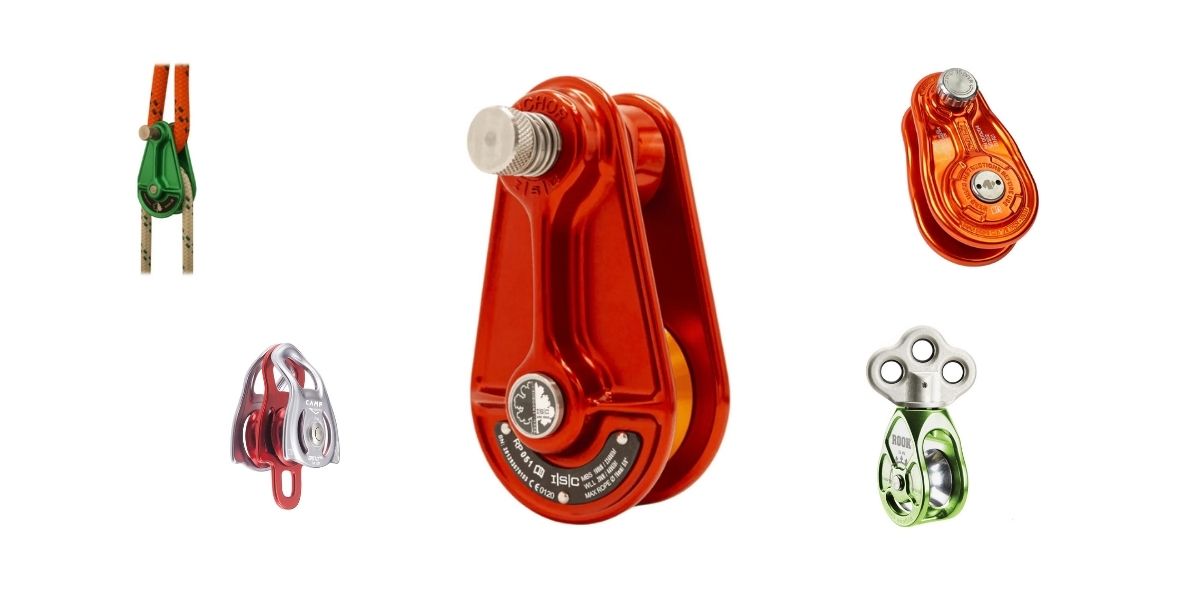Rigging blocks and pulley systems are essential tools in any arborist’s rigging setup. This guide covers essential information for arborists about effectively using rigging blocks and tree climbing pulleys to enhance safety and efficiency when performing tasks like controlled lowering, technical tree removals, and redirecting loads.
What Is the Role of Rigging Blocks in Tree Climbing?
A rigging block (often referred to as a tree rigging block or arborist rigging block) is a heavy-duty pulley designed to handle dynamic loads during tree rigging operations. These blocks help manage the forces created when lowering limbs or redirecting loads, reducing strain on the tree and the rope. Unlike basic pulleys, rigging blocks are specifically engineered for tree work, offering high strength and smooth rope flow.
How to Choose the Right Rigging Block for Arboriculture Tasks?
When selecting a rigging block for arboriculture tasks, arborists should consider the following:
-
Load capacity: Choose a block rated for the expected dynamic forces.
-
Rope compatibility: Ensure the sheave fits the diameter of your rigging rope.
-
Ease of setup: Some blocks offer swing-side plates or quick-release pins for faster rigging.
-
Durability: Look for corrosion-resistant materials and robust construction.
Smaller jobs may benefit from a micro pulley for tree climbing, which is lightweight and compact but still effective for redirecting ropes or managing light loads.
What Are the Best Pulley Systems for Arborists?
The best pulley systems for tree climbing are those designed to match the demands of the specific task. For simple operations like redirects or light hauling, a basic climbing pulley often does the job efficiently. On the other hand, more complex tree-climbing pulley systems may involve multiple pulleys to create a mechanical advantage, making it easier to lift or lower heavy branches. Depending on the situation, arborists might rely on block pulleys for handling heavy loads, micro pulleys for lighter rigging or directional changes, and double pulleys when setting up systems that require increased lifting power.
How to Properly Set Up a Pulley System for Arborist Tasks?
To set up an effective tree climbing pulley system:
-
Inspect your gear: Check ropes, blocks, and carabiners for wear.
-
Choose the right anchor point: Strong, load-bearing branches are ideal.
-
Install your rigging block: Securely attach the block using a sling or rigging strap.
-
Thread the rope correctly: Ensure smooth rope flow with minimal friction.
-
Test the system: Apply light tension to confirm everything is secure before loading.
Always follow manufacturer guidelines and industry safety standards.
What Are the Key Benefits of Using Rigging Blocks in Tree Rigging?
Using a proper tree rigging block offers several important benefits that can greatly improve the efficiency and safety of your work. It helps minimize friction, which reduces rope wear over time and provides better control during lowering operations. By distributing the load more evenly, a rigging block also lessens the strain on the tree itself. Most importantly, it enhances safety, particularly during dynamic rigging tasks where sudden forces are involved. Overall, integrating rigging blocks into your setup leads to smoother, safer, and more effective rigging operations.
How to Safely Use Pulley Systems in Tree Climbing?
Safety is paramount when using any pulley system for tree climbing. Follow these key practices:
-
Conduct pre-climb inspections of all gear.
-
Use rated equipment designed specifically for arborist applications.
-
Avoid shock loading, which can exceed the working load limit of your gear.
-
Communicate clearly with the ground crew during lifts and lowers.
-
Wear proper PPE, including helmets, gloves, and eye protection.
By following best practices, arborists can safely and effectively use tree climbing pulleys and rigging blocks in any scenario.
Looking to upgrade your rigging setup? Explore our full range of rigging blocks, tree climbing pulleys, and micro pulleys designed for professional arborists. Whether you're tackling heavy rigging jobs or looking for lightweight gear, we have the tools you need to climb and rig with confidence.

